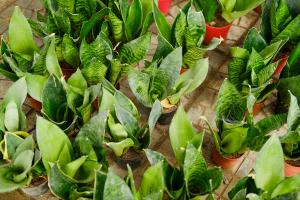Para Rubber Tree Plant
The para rubber tree plant, also known as Hevea brasiliensis, is a species of rubber tree belonging to the Euphorbiaceae family. Originally native to South America, the para rubber tree plant was later brought to Southeast Asia, where it is now extensively cultivated for commercial rubber production.
Plant Characteristics
The para rubber tree can grow up to 30 meters tall, with a broad trunk that can reach up to 2 meters in diameter. Its leaves are dark green and glossy, with a simple, oval shape and a pointed tip. Each leaf can grow up to 30 centimeters long and 15 centimeters wide, and the tree can produce clusters of small, greenish-yellow flowers.
The seed of the para rubber tree is known as the rubber seed, which is the source of natural rubber. Each seed contains a white latex, which is extracted from the tree through a process known as tapping. The extracted latex is then treated to form rubber sheets, which are used for various applications, including the production of tires, rubber bands, gloves, and other rubber products.
Cultivation and Production
The para rubber tree plant is now widely cultivated in countries such as Thailand, Indonesia, Malaysia, and Vietnam. The plant thrives in a warm, humid climate, with abundant rainfall and good drainage. In addition, it requires a well-drained soil with a pH range of 5.5 to 7.5.
The process of rubber production from para rubber trees starts with tapping, which involves cutting a thin layer of bark from the tree trunk, allowing the latex to flow out. The latex is then collected in cups, and the process is repeated every other day for several years. After that, the tree is usually cut down, and a new tree is replanted in its place.
After the latex is collected, it is mixed with formic acid or acetic acid to prevent coagulation, and then it is coagulated with the use of sodium hydroxide to produce rubber sheets. The sheets are then washed, dried, and smoked to produce the final product.
Economic Importance
The para rubber tree plant is one of the most important economic crops in Southeast Asia, providing a significant source of income for millions of people in the region. The natural rubber produced from these trees is used in a wide range of products, including tires, medical equipment, and household items.
However, the industry is facing challenges due to the declining rubber prices in recent years, as well as the increasing competition from synthetic rubber. Nevertheless, the para rubber tree plant remains a crucial source of economic activity, providing jobs for large numbers of people and contributing to the economic growth of the region.
Conclusion
The para rubber tree plant is a valuable crop that has contributed significantly to the economic development of Southeast Asia. Its natural rubber has played a critical role in many industries, and the cultivation of this crop continues to provide income and employment opportunities for millions of people in the region. Despite the challenges facing the industry, the para rubber tree plant remains an essential component of the region's economy and is likely to remain so for many years to come.

 how many times do yo...
how many times do yo... how many planted tre...
how many planted tre... how many pine trees ...
how many pine trees ... how many pecan trees...
how many pecan trees... how many plants comp...
how many plants comp... how many plants can ...
how many plants can ... how many plants and ...
how many plants and ... how many pepper plan...
how many pepper plan...































